- Marvin Harrison Jr. disappointed in his rookie season: He was expected to finish as a top-20 fantasy wide receiver, but instead finished at WR30.
- J.J. McCarthy is set up for success: The Minnesota Vikings coaching staff, skill players led by Justin Jefferson, and the offensive line should put McCarthy in a position for success in his first season as an NFL starter.
- Subscribe to PFF+: Get access to player grades, PFF Premium Stats, fantasy football rankings, all of the PFF fantasy draft research tools and more!
Estimated reading time: 17 minutes

The 2024 NFL draft class has yielded several fantasy stars, as Jayden Daniels, Bucky Irving, Malik Nabers, Brian Thomas Jr., Ladd McConkey, and Brock Bowers are already considered among the best at their respective positions. However, there are still a number of other players who could make strides this season, making them worthy of consideration at various points of fantasy football drafts.
Here are five second-year players who didn’t fully live up to expectations as rookies but are worth considering at their current ADP or even earlier.
The average draft position listed is from a consensus between ESPN, Sleeper and Yahoo! for where the player is picked on average in a 12-team, redraft league.
Last updated: Thursday, July 3
WR Marvin Harrison Jr., Arizona Cardinals (ADP: 4.08)
Harrison was the fourth overall pick in the 2024 draft, which was the highest any wide receiver had been picked since Amari Cooper in the 2015 draft. He was an immediate starter for the Arizona Cardinals with a lot of expectations. He played at least 80% of Arizona's offensive snaps in most losses, but that would drop as low as 70% depending on how much the Cardinals were winning by in their victories.
After a quiet debut, he showed some of his promise through the rest of September, totalling 14 receptions for 239 yards and four touchdowns in his following three games. He dealt with a minor injury but showed his promise again in Week 8, finishing with six receptions for 111 yards and a touchdown. He followed that up with seven consecutive games under 60 receiving yards. Harrison finished 2024 on a high note, accumulating 11 receptions for 159 yards and a touchdown over his final two games.
This left him 30th in total fantasy points despite not missing a game. He only had two games as a top-12 fantasy wide receiver, and he ranked outside the top 48 in over 40% of his games. His PFF receiving grade was 29th among wide receivers with at least 200 routes run last season. His target share was generally fine, as his 114 targets were tied for the 19th-most among wide receivers, but only 69 of those targets were catchable, ranking 37th-most. His 45 uncatchable targets were the most in the league, and his 39.5% uncatchable rate was the highest among the 52 wide receivers with at least 75 targets.


Harrison will not only have the same competition for targets but also the same offensive coordinator, quarterback, running back room and most of the same offensive line. The Cardinals haven’t run a lot of plays per game but have run the ball more than most teams, which works a little bit against Harrison.
The bigger problem was his chemistry with Kyler Murray. Part of the issue is that Harrison has 23 targets when Murray was under pressure, finishing with a 17.4-yard average depth of target, and only 11 of those passes were catchable. A lot of the problem was Murray's chemistry with Harrison, leading to awkward ball placement, or Harrison simply not being where Murray thought he would be. Murray’s accuracy hasn’t generally been a problem, so this seems fixable. Head coach Jonathan Gannon said he expects a huge leap, and Murray has talked about improving their chemistry and timing.
Looking at historic data from the last decade, players with a 60.5% catchable target rate one year typically regress to the mean and have a 68.8% catchable target the following year. While that’s still below league average for wide receivers, that would be enough to move him from WR30 to WR17. If you believe Murray and Harrison can improve their chemistry better than a typical duo, then Harrison may improve even further.

Harrison’s first season was full of big expectations, which he didn’t fully live up to. Luckily, his target rate was high, and his target competition remains limited. He should finish among the top-20 wide receivers in targets again, and he needs to improve his chemistry with Kyler Murray so his fantasy value can also be among the top-20 wide receivers.
QB J.J. McCarthy, Minnesota Vikings (ADP: 14.04)
J.J. McCarthy spent three years as a quarterback at Michigan, initially as a backup to Cade McNamara, but then he beat out McNamara for the starting job in 2022. He never was a high-volume quarterback due to Michigan’s run-first offense and constantly playing with a lead, but he was great on a per-play basis. He was in the 90th percentile or better in each situation. He improved significantly from his first year as a starter to his second. His dropbacks per game decreased, but his stats still increased thanks to a much higher accuracy rate.
McCarthy similarly never ran the ball too often himself, but he had a very high rate of gaining at least 15 yards or a first down. His speed and athleticism are both above average for an NFL quarterback.
His success at Michigan led the Minnesota Vikings to select McCarthy with the 10th pick of the 2024 NFL Draft after Caleb Williams, Jayden Daniels, Drake Maye and Michael Penix Jr. but just before Bo Nix. The Vikings had moved on from Kirk Cousins at quarterback and signed Sam Darnold, who was initially the starter, but the general assumption was that McCarthy would take over either before Week 1 or not long after. However, McCarthy tore his meniscus. He had surgery to repair it and missed his entire rookie year.
While Darnold played well for the Vikings, Minnesota opted not to re-sign him and stick with McCarthy as its starter for the 2025 season. From all reports, McCarthy is looking healthy and should be fully ready to go for the season.
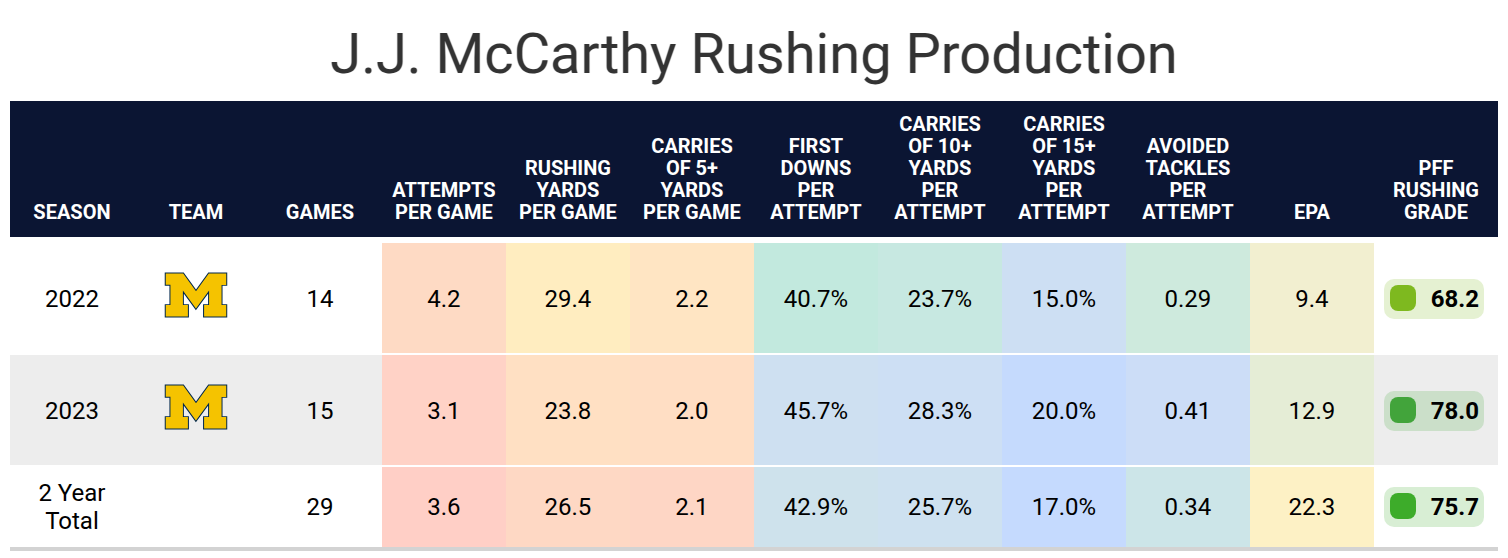
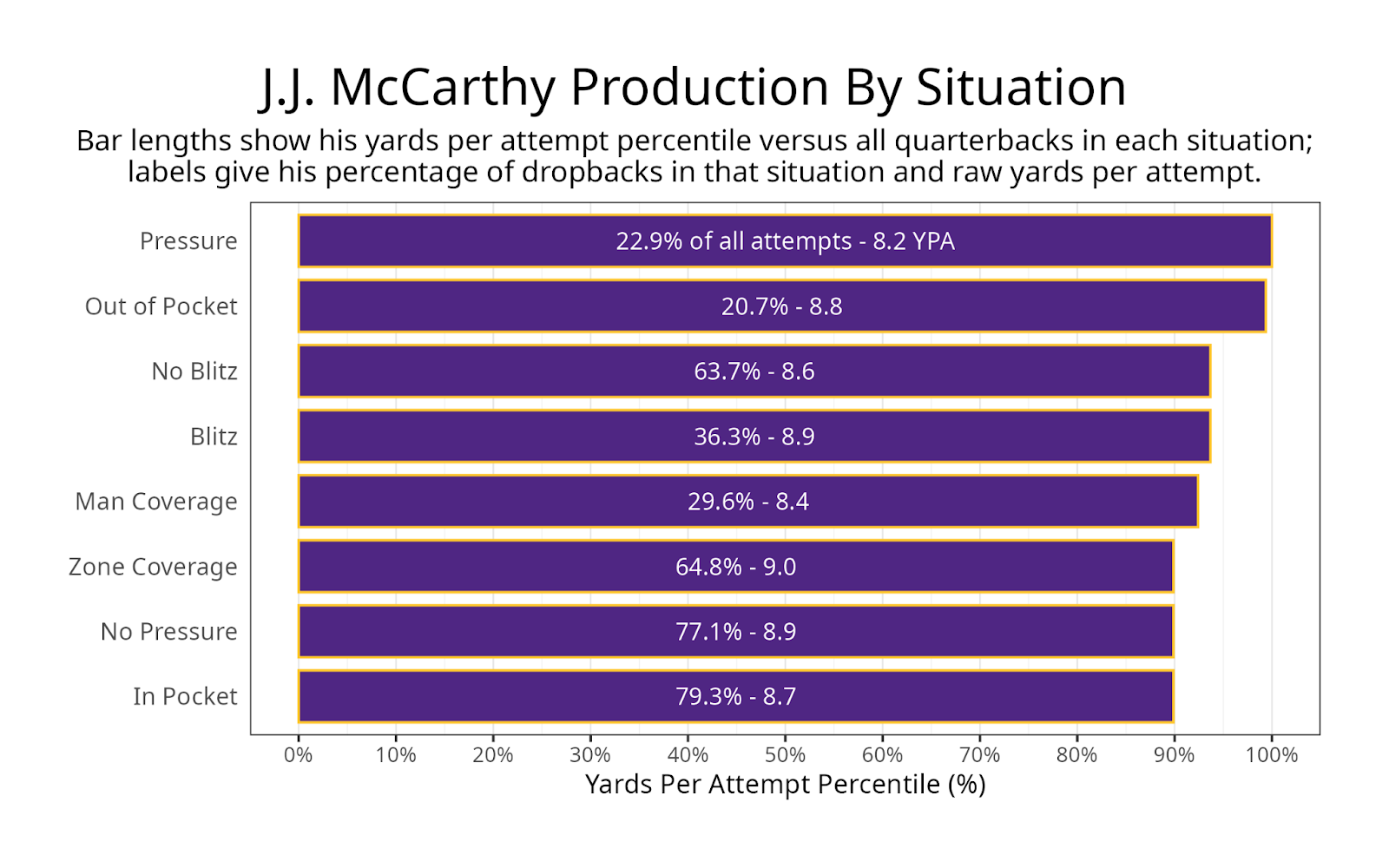
McCarthy joins the Minnesota Vikings offense led by Kevin O’Connell. His offenses have been great for quarterbacks. The Vikings typically run an average-to-high number of plays and are consistently passing the ball at a high rate. Sam Darnold was a top-10 fantasy quarterback last season, Kirk Cousins was in 2022, and in 2023, he was top 10 in points per game. In 2023, after Cousins' injury, Dobbs was a top-12 fantasy quarterback in three of four games he played 100% of his team's offensive snaps, while Nick Mullens was a top-14 fantasy quarterback when he played 100% of the snaps. Both Dobbs and Mullens had weeks as a top-five fantasy quarterback.
McCarthy will be surrounded by a strong receiving group in Minnesota, with Justin Jefferson and Jordan Addison at wide receiver, T.J. Hockenson at tight end and Aaron Jones Sr. at running back. The Jefferson and Hockenson duo has been around for multiple seasons and is part of the reason the Vikings quarterbacks always perform better in fantasy than they do in real-life quarterback rankings. Even if McCarthy struggles like most quarterbacks do in their first year, the supporting cast and coaching staff should be enough to make McCarthy a top-24 fantasy quarterback. There is a chance McCarthy plays better than past Vikings quarterbacks, in which he could be a top-eight option.
The Vikings had an average offensive line in pass protection last season, but there is reason to believe they will be much better this season. Brian O’Neill is the only returning full-time starter, and he was one of the best pass-protecting right tackles last season. Christian Darrisaw had emerged as one of the best young left tackles in the league but missed half the year due to injury. The interior of the line wasn’t great, leading the Vikings to add Donovan Jackson in the first round of the draft in addition to free agents Ryan Kelly and Will Fries from the Indianapolis Colts. All of them should be at least minor upgrades over the 2024 starters.
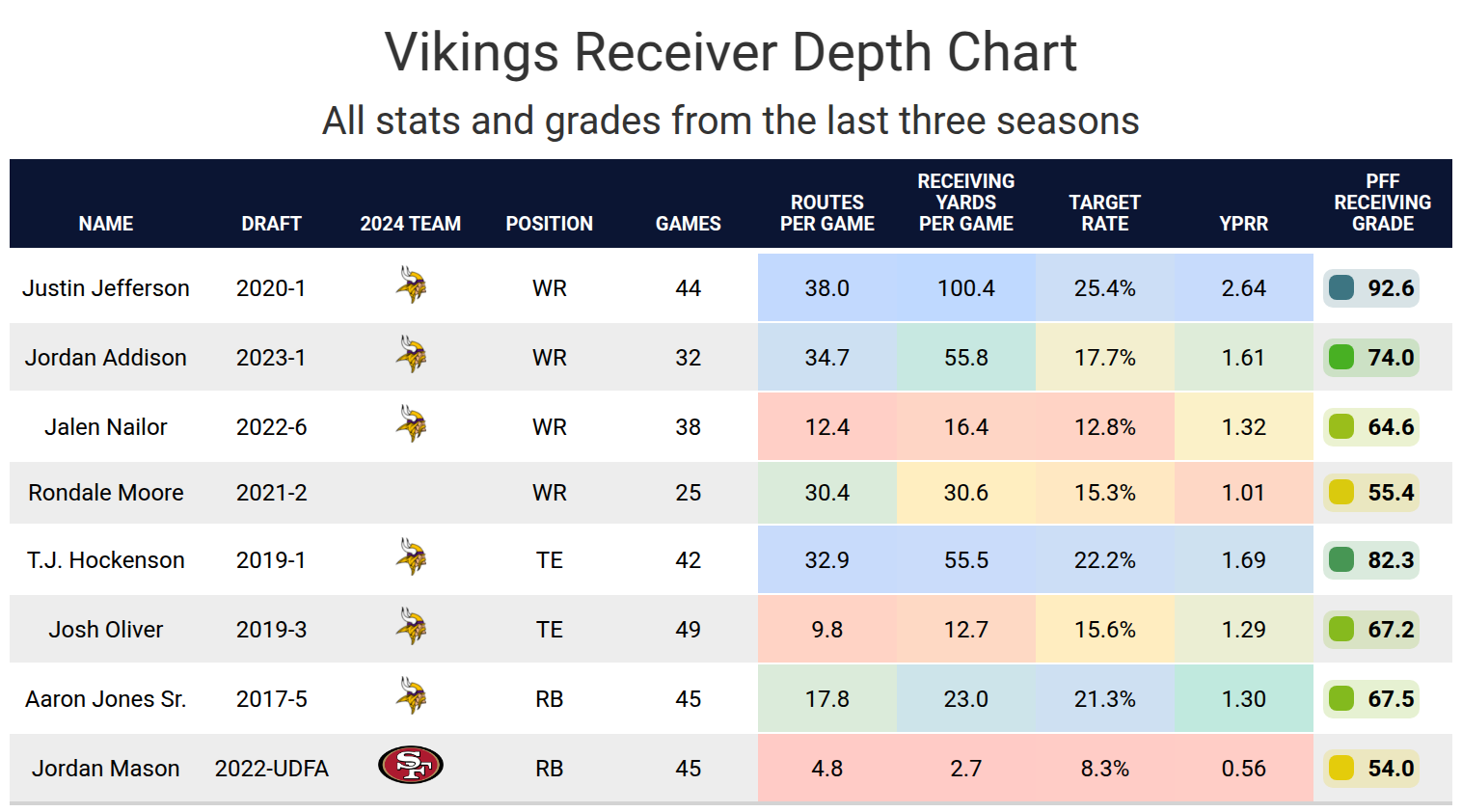
Every quarterback who is in their first year as a starter with minimal rushing upside is a risk for fantasy football, but the coaching staff and surrounding cast in Minnesota put J.J. McCarthy in a better position to succeed than nearly all other first-year starting quarterbacks of recent seasons. McCarthy should already be considered a starter in superflex leagues and is a great high-upside option as a backup in single-quarterback leagues.
QB Caleb Williams, Chicago Bears (ADP: 10.09)
Caleb Williams was the first overall pick of the 2024 NFL draft, so he replaced Justin Fields as the Chicago Bears‘ starting quarterback. Williams was drafted in fantasy drafts to be a borderline fantasy starter, which is unheard of for rookie quarterbacks unless there is tremendous rushing upside. For Williams, the difference was the situation. The Bears were a 7-10 team with a near-even point differential rather than the worst team in the league – Williams was talented, the Bears already had D.J. Moore, and they added Keenan Allen and Rome Odunze.
Unfortunately, Williams got off to a rough start. He completed less than half of his passes in Week 1 with a 50.2 passing grade and finished as QB33 that week. Week 2 wasn’t much better, as he finished with slightly better cumulative stats but a 42.7 passing grade.
Williams could only go up from there, as there were some flashes of a great quarterback throughout the season. He achieved a PFF passing grade between 75.0 and 83.0 in four home games, mostly in the second half of the season. He ended up as QB16 on the season, which wasn’t far off from where he was drafted, but he was 22nd in points per game. He had five games as a top-six fantasy quarterback, which largely coincided with the games where he graded well, but he was outside of the top-18 fantasy quarterbacks in over half of his games, making it impossible to know when to start Williams in single-quarterback leagues.
Adding Ben Johnson as head coach should be a significant positive, as the Lions' offense has been high-scoring for several years. Jared Goff has been a good, but not great, quarterback according to PFF's passing grade, and yet his performance in Johnson’s system last season led to Goff being a top-seven fantasy quarterback. Ideally, Williams can be a better quarterback than Goff and have the same rewards from a fantasy perspective.
Johnson’s passing attack has typically involved throwing shorter passes that are easier to complete, which should generally help William’s numbers. However, his offenses have also been more run-heavy. It’s unclear if that will be the case in Chicago because Johnson’s Lions invested heavily in their top two running backs, while Chicago hasn’t made any changes at the position. Williams was among the leaders in dropbacks per game last season, and that could potentially decrease this season. Johnson’s offenses also didn’t lead to many designed rushing attempts by his quarterback. Part of that could be because of Goff, but it could also be Johnson’s preference, which would mean fewer rushing attempts by Williams.

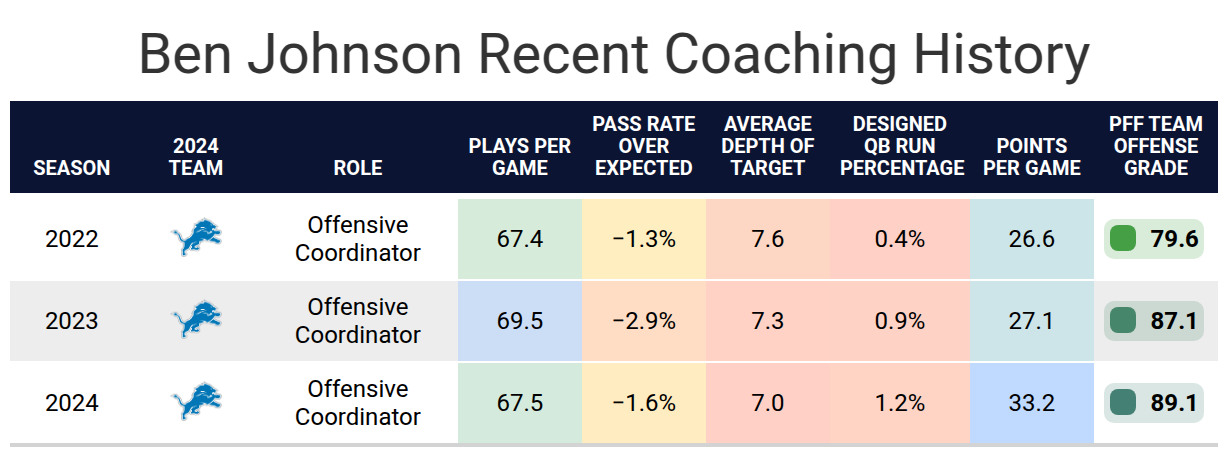
While the Ben Johnson addition as head coach is a big reason for optimism surrounding Williams, the Bears followed up that addition with several more key players to the offense, which should also help Williams.
The Bears decided not to re-sign Keenan Allen but instead brought in Luther Burden III with an early second-round pick. They also added tight end Colston Loveland in the first round. D.J. Moore has played well throughout his career, and Rome Odunze was a top-10 pick in 2024 and will ideally improve in his second season. This group of four receivers has the potential to be the best four-person receiving group in the league, but so far, only one of the four players has worked out in the NFL. While the potential for this unit is sky-high, there’s a wide range of possibilities for how this unit plays this season.
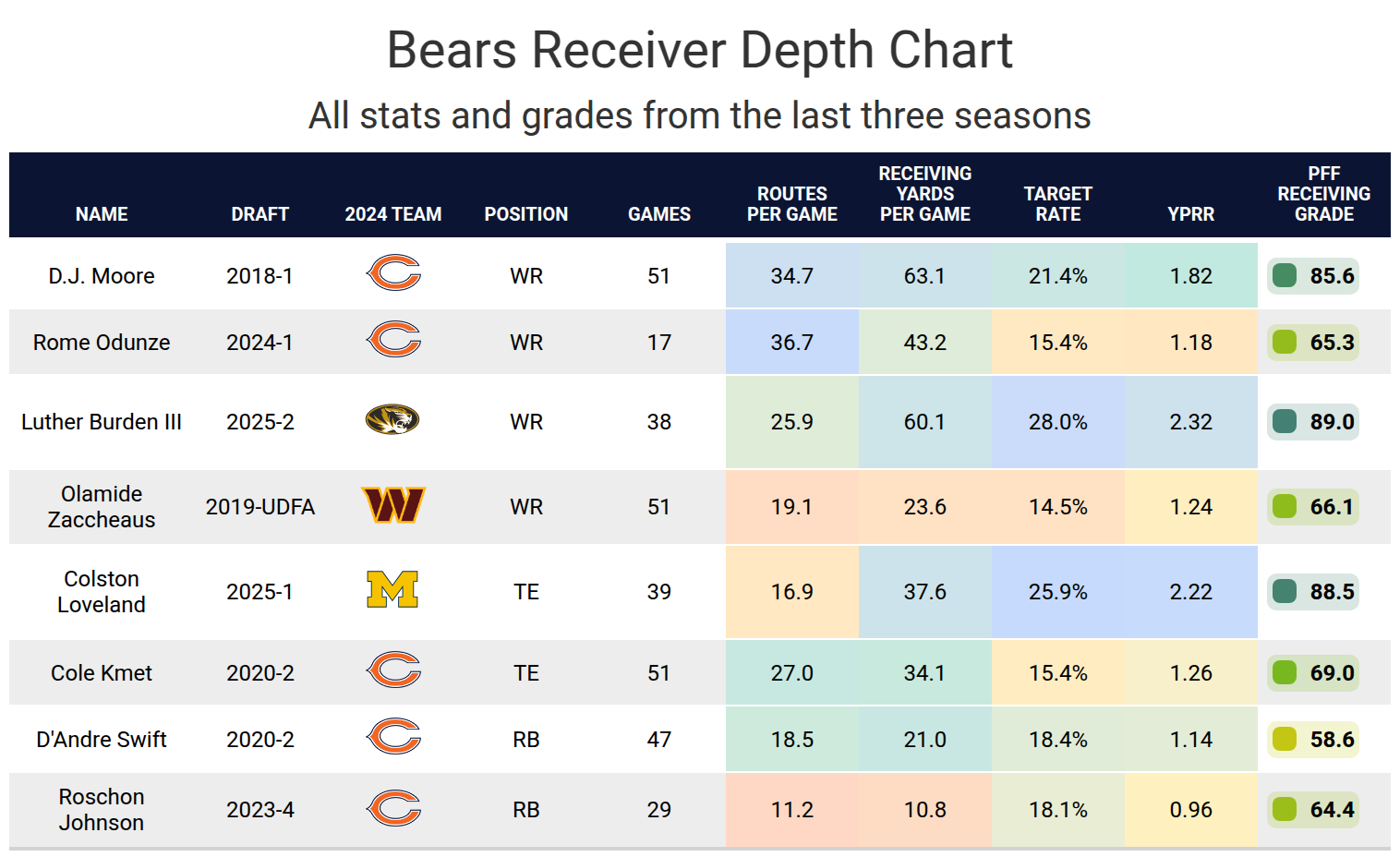
Williams is a great option for those in single-quarterback leagues who want to wait on quarterbacks. Anyone drafting Williams will need another option, just in case all of the new moving parts on offense need some time to work out. Williams has one of the clearest paths to be a top-five fantasy quarterback among those ranked outside of the top 10.
RB Braelon Allen, New York Jets (ADP: 19.09)
Braelon Allen joined the New York Jets as a fourth-round pick from the 2024 NFL Draft. The Jets' primary backup to Breece Hall in 2023 was Dalvin Cook, but the Jets didn’t end up re-signing Cook. Hall was dealing with a quadriceps injury early in the year, allowing Allen to run seven times for 33 yards and a touchdown in Week 2 and 11 times for 55 yards in Week 3.
His playing time fluctuated throughout the year, totaling two to seven carries most weeks. Allen started in Week 14 when Hall was out due to a knee injury. He played 54.4% of New York's offensive snaps that game, while his high in other weeks was 36.5%. He ran 11 times for 43 yards and caught four passes for 38 yards, while fifth-round rookie Isaiah Davis was also given an opportunity to shine.
Allen averaged a low 3.6 yards per carry, but he graded well thanks to his excellent play in short-yardage situations. Allen ran the ball 16 times when the Jets needed two yards or less for a first down, and he converted 14 of them. He averaged 3.3 yards per carry on those runs, while the league average was 3.2. His 90.0 rushing grade on those runs was the best among running backs.

The Jets didn’t make any changes to their backfield for 2025, as Hall and Davis were Allen's primary sources of competition. The team also added Justin Fields at quarterback, and he will be running the ball a lot more than Aaron Rodgers. This could also include short-yardage situations. The Jets voted to keep the tush push, so there is a chance Fields, in particular, could take those one-yard carries, even though Allen was very successful at them.
Allen is one of the biggest running backs in the league at 6-foot-1 and 235 pounds. Most running backs of that size aren't used significantly in passing situations. Derrick Henry, Najee Harris, Gus Edwards, D’Onta Foreman and James Conner have rarely been used in passing situations. Henry and Conner have been able to turn into consistent fantasy starters despite this, but Allen would need to at least double his rushing attempts per game in order to reach their level.
The Jets hired Aaron Glenn as head coach and Tanner Engstrand as offensive coordinator from the Detroit Lions. In recent years, the Detroit Lions have used either Jamaal Williams or David Montgomery on early downs and D’Andre Swift or Jahmyr Gibbs on passing downs. Allen could be well suited for that early-down role, as he's a bigger back than either Williams or Montgomery. The two were used to convert first downs, wear down the defense and, most importantly, score touchdowns.
The running back in this role has finished in the top 20 in fantasy points per game each of the last three seasons. A few things need to go right in order for Allen to reach that top-20 range. Engstrand needs to use the same running back rotation, and Fields can’t be used as the runner in short-yardage situations.
The Jets also need their offensive line to play close to the Lions' level. Detroit has ranked among the top 10 in run-blocking grade each of the last three seasons, while the Jets ranked 12th last season. The Jets moved on from veteran tackles Tyron Smith and Morgan Moses for two first-round picks in Olu Fashanu and Armand Membou. The entire line has a very high positive grade rate, which is generally good for breaking long runs. They have mixed results when it comes to negatively blocked runs. However, Allen stood out in how well he played on non-perfectly blocked runs with 3.4 yards per carry. Montgomery also had 3.4 yards per carry on non-perfectly blocked runs, but Montgomery was better on the positively blocked runs. If Allen can avoid more tackles once the line gives him those clean blocks, that could make a big difference to his fantasy production.
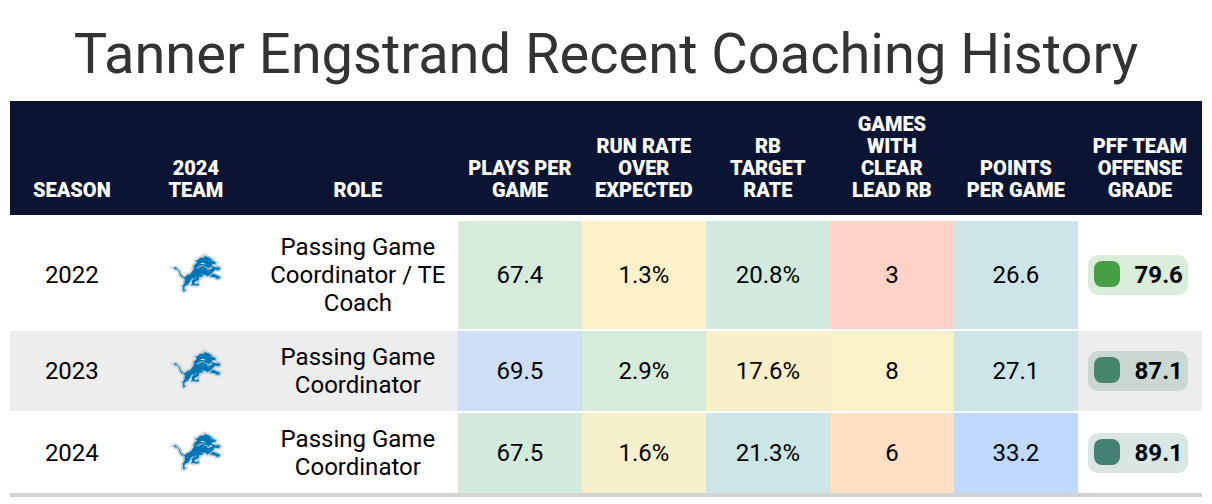
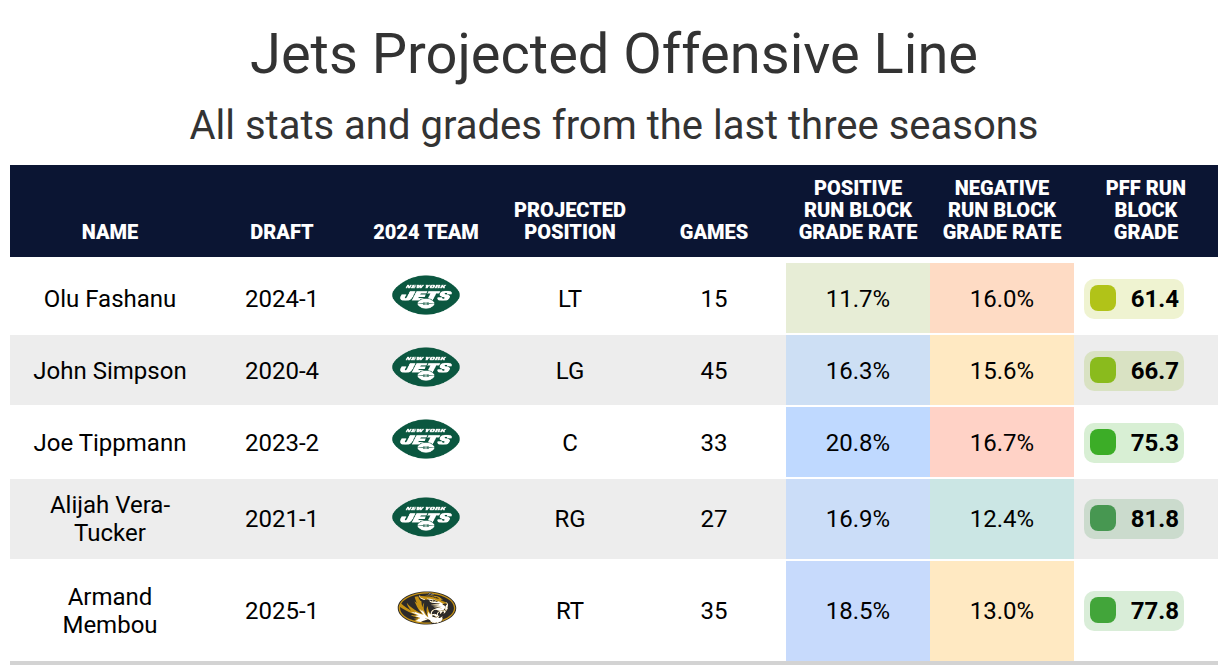
The goal is for Allen to be the next David Montgomery. The coaching staff needs to use him in that role, the offense needs to play well enough for Allen to score enough points, and Justin Fields can’t be used on the tush push. While that is a lot, there is similarly a lot for any other late-round running back, and this one doesn’t require an injury to a starter.
RB Trey Benson, Arizona Cardinals (ADP: 16.09)
Trey Benson was a third-round pick by the Arizona Cardinals in the 2024 NFL Draft. It was obvious that Benson would be James Conner‘s backup in his rookie season after Conner set career-highs in yards per carry and rushing yards per game in 2023. Conner is also among the older running backs in the NFL with over 1,000 career carries, so Benson seemed to be the Cardinals’ running back of the future. Conner had also missed a minimum of two games every season, which made it seem likely that Benson would see at least a few starts as the lead running back as a rookie. The possibility of a Conner injury made Benson one of the top handcuff options in redraft leagues last season.
Conner missed the season's last game, but unfortunately, Benson suffered an ankle injury in Week 15, causing him to miss the last two games of the season. That, unfortunately, meant he missed his one opportunity to start.
Benson played anywhere from two to 22 snaps each week. He ran the ball five times or fewer in most of his games. The four exceptions were all 20-point blowouts, with three in the Cardinals‘ favor. Benson ran eight to 11 times in those games. Benson didn’t grade all that great as a runner, largely thanks to one fumble. He had solid first-down and 10-plus-yard carry rates. It’s hard to take too much away from Benson’s stats, considering a high percentage of them came in the fourth quarter when games were out of reach.
Benson was barely used as a receiver, but he caught all six of his targets, and half resulted in first downs.

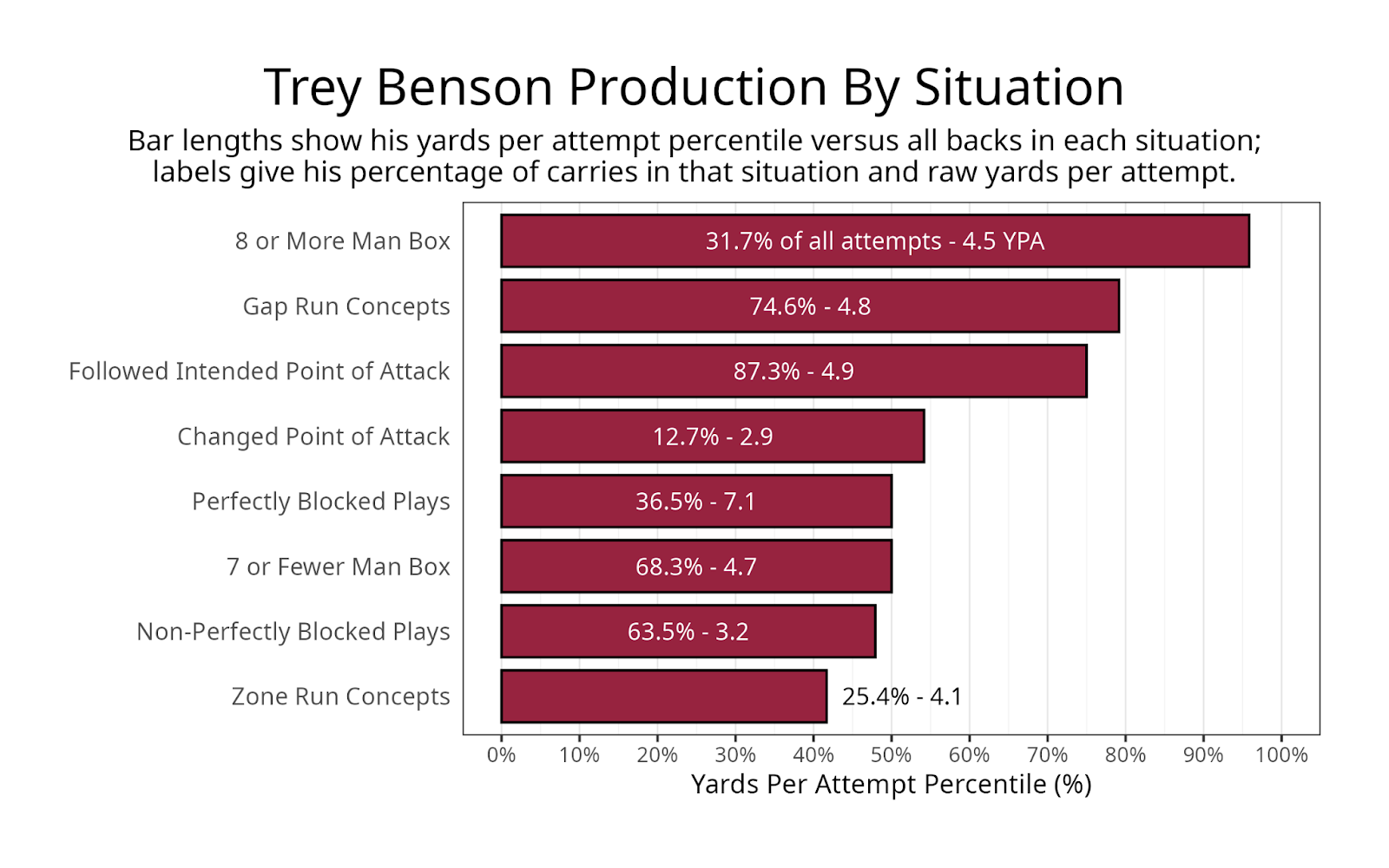
Benson remains in a rough spot with the Cardinals this season. Arizona kept an identical backfield to last season, including bringing back the practice-squad running backs who would get elevated during an injury. Often, if a running back was waiting in the wings, they could play in whatever situation the main running back was weakest at. However, Conner played everything but third downs, and Emari Demercado played on third downs. This meant Conner had those plays to rest and didn’t need to get rotated out as often on early downs.
Benson tended to get used to more in short-yardage situations, even though he and Conner are very similar in size. Conner was in the last season of his contract, but in late November, Conner signed a two-year extension. That means Conner is under contract this season with little to no chance he could get traded. The Cardinals can comfortably move on from Conner after the season if they want to, but his price tag for 2026 is reasonable enough if they want to keep him.
This means Benson is in the exact same spot as he was last year. He is Conner's handcuff, and either needs Conner's play to decline or for him to get injured for Benson to play significant snaps. Given Conner’s injury history, it is more likely Benson will see starts this season compared to other backup running backs. We can expect Benson to fully take Conner’s role if he’s injured.
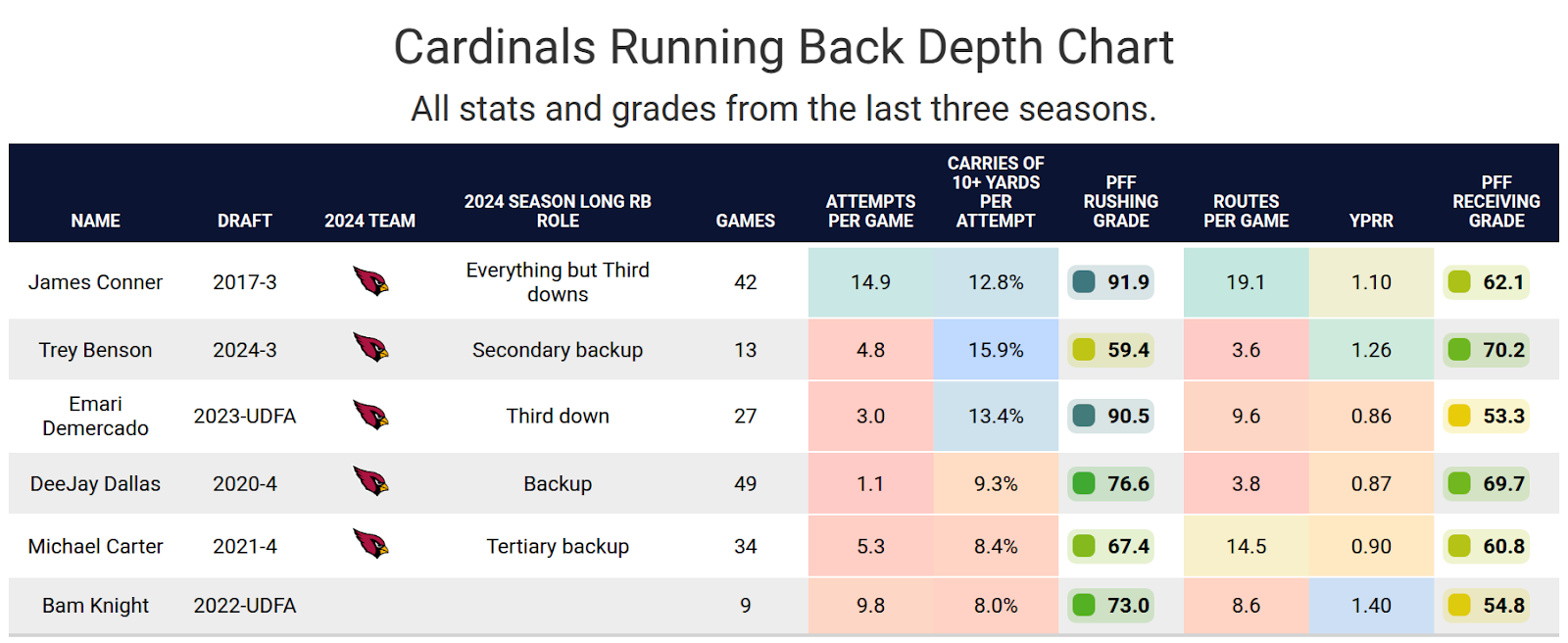
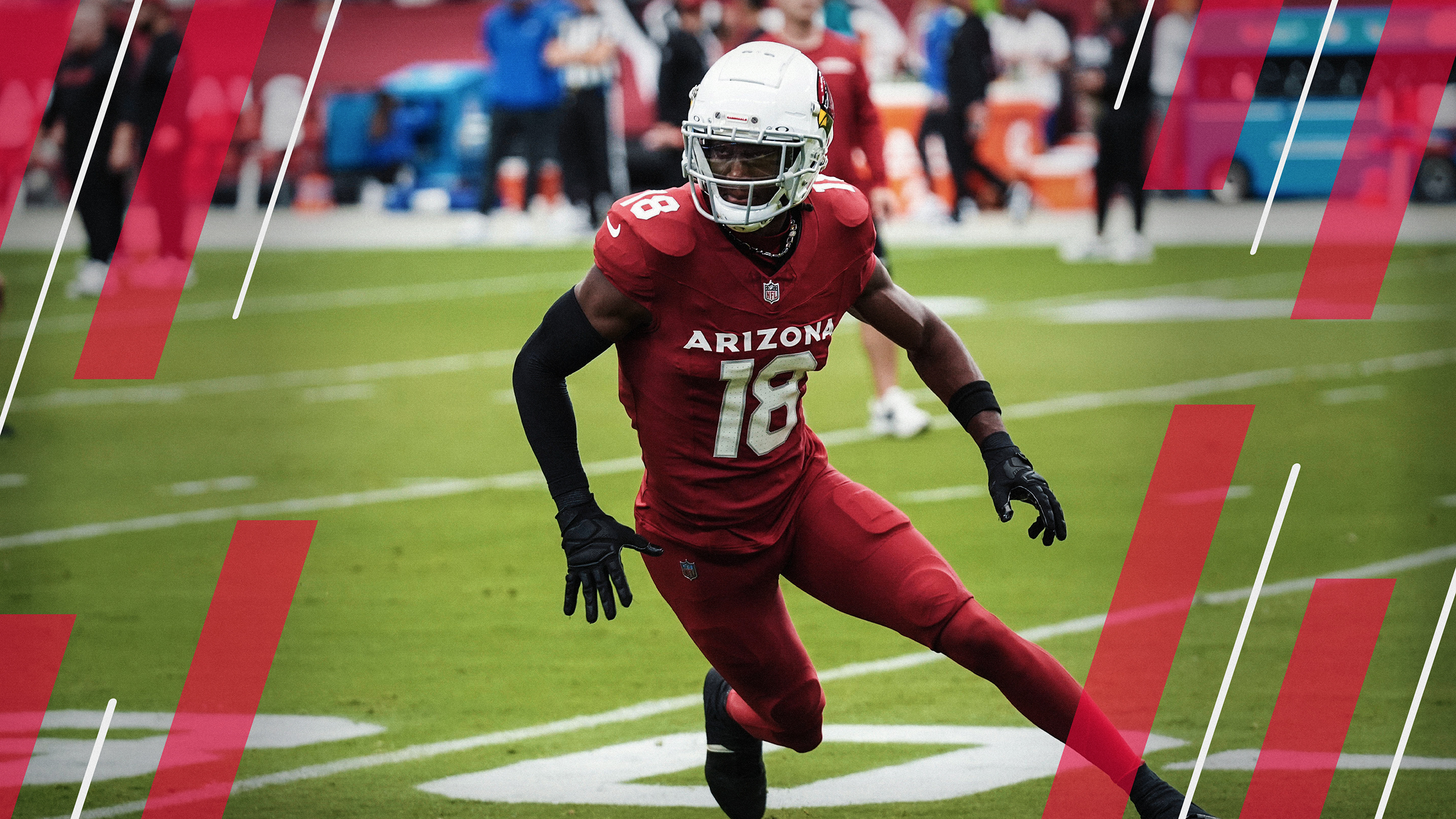


 © 2025 PFF - all rights reserved.
© 2025 PFF - all rights reserved.